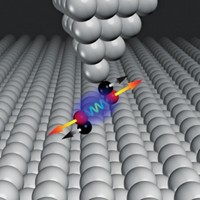Advertisement
Grab your lab coat. Let's get started
Welcome!
Welcome!
Create an account below to get 6 C&EN articles per month, receive newsletters and more - all free.
It seems this is your first time logging in online. Please enter the following information to continue.
As an ACS member you automatically get access to this site. All we need is few more details to create your reading experience.
Not you? Sign in with a different account.
Not you? Sign in with a different account.
ERROR 1
ERROR 1
ERROR 2
ERROR 2
ERROR 2
ERROR 2
ERROR 2
Password and Confirm password must match.
If you have an ACS member number, please enter it here so we can link this account to your membership. (optional)
ERROR 2
ACS values your privacy. By submitting your information, you are gaining access to C&EN and subscribing to our weekly newsletter. We use the information you provide to make your reading experience better, and we will never sell your data to third party members.
Analytical Chemistry
Superslippery Surfaces
February 25, 2008
| A version of this story appeared in
Volume 86, Issue 8
Repulsive van der Waals forces are one of the keys to sliding without friction, according to researchers at the Swedish Royal Institute of Technology, in Stockholm (Langmuir, DOI: 10.1021/la7036907). For most materials in sliding contact, van der Waals forces are attractive and cause the interacting surfaces to be drawn together. That attraction leads to friction, which limits the lifetime of most moving parts. In contrast, repulsive van der Waals interactions are uncommon. Adam A. Feiler and coworkers, however, have observed such repulsive forces by using an atomic force microscopy setup in which a gold sphere attached to a cantilever interacts with a Teflon surface coated with cyclohexane. For that system, the team measures a friction coefficient of zero, within the limits of the instrument's resolution. Materials that exhibit these repulsive interactions are uncommon, the researchers say, but include technologically relevant systems such as metal bearings in contact with a Teflon housing (and an organic lubricant) and some combinations of ceramics.





Join the conversation
Contact the reporter
Submit a Letter to the Editor for publication
Engage with us on Twitter